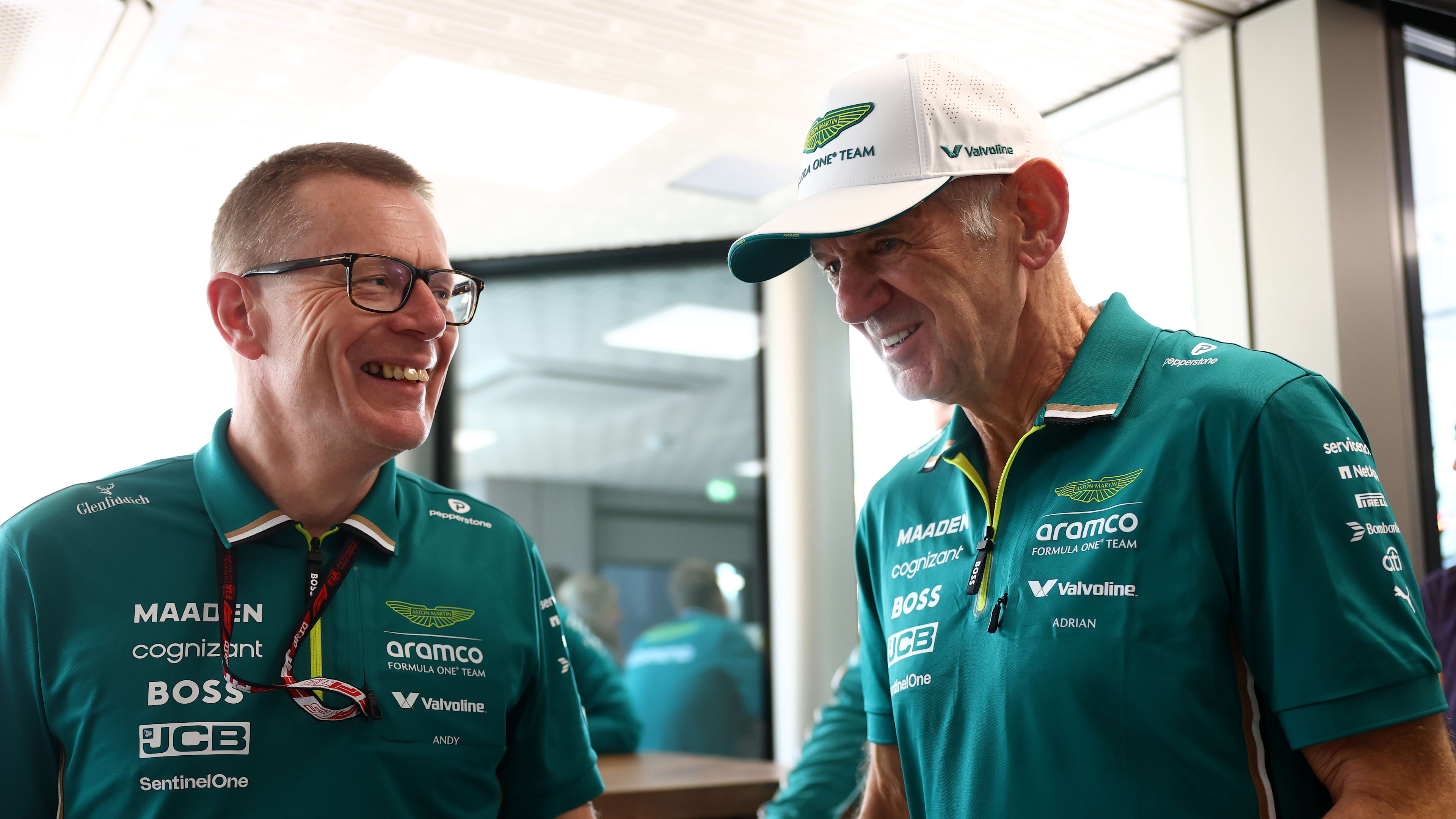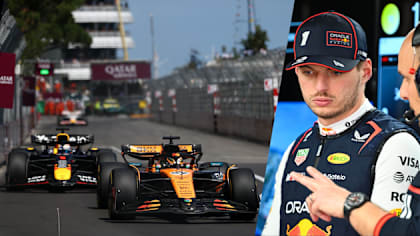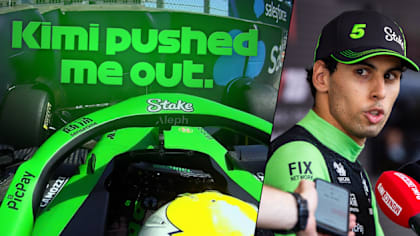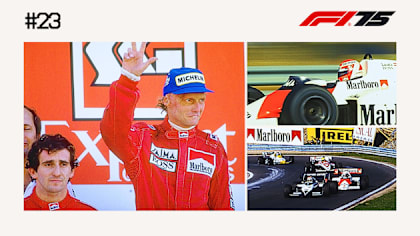30 May - 01 June
Feature
Jolyon Palmer’s Analysis: The driving techniques Hamilton used to win Monaco

Share
Lewis Hamilton was forced to call upon all his skill, as well as the technological tools at his disposal in the cockpit of his Mercedes W10, to bring home his 77th Grand Prix victory at Monaco, having been forced to run a 67-lap stint around the Principality on a set of medium tyres. Former Renault driver Jolyon Palmer could feel Hamilton’s pain, knowing full well what it’s like to be struggling around a track on worn-out rubber. Here, he analyses the approaches that Hamilton used to keep Max Verstappen behind him and claim his third Monaco Grand Prix win.
Much has been said about Lewis Hamilton’s drive in Monaco – and it was certainly a very measured, strategic performance. Of course, it also needed to be defensive because the tyres he was put onto during his pit stop – the mediums – were not as durable as the hards fitted to the Red Bull and Ferrari behind him (and eventually Bottas too). We know that as the tyres get harder, they have more durability at the expense of peak performance, but how exactly does that manifest itself?
READ MORE: The key factor behind the big increase in speed at Monaco revealed
Hamilton’s main problem in his second stint was tyre graining on his left front. That is where the tyre is sliding against the track surface and it means the rubber balls up in ridges on the surface of the tyre. Inevitably you get less grip as you have a smaller contact patch of the tyre, because of the balls on the surface. This is the graining effect, and you can see it from the outside with darker patches on the tyre, usually towards the inside.

Graining explained
Usually you get graining when the temperature is cold and the tyres are fresh on. This is where the tyre is most likely to operate outside of its temperature range, then you get the sliding, then you get the graining.
The other ways a tyre can degrade is by thermal degradation or just general wear. Thermal degradation is when the tyres get too hot, usually by pushing hard for a long period of time, and this is exaggerated when a car is following another more closely and is sliding, usually more at the rear.
General wear is simply the use of a tyre that is working in its temperature range, but is just using the rubber as its going. This is wear in its simplest form. The more you use the tyre, the less rubber is left and the slower you go.
For Hamilton in Monaco, the problem was on the fronts, particularly the left front. This is typical because of the cooler temperatures and the fact that Monte Carlo is a clockwise circuit, like most on the calendar. The outside front always takes the biggest load.
If you have front degradation you get more and more understeer. You simply can’t turn the car as quickly. As you turn in, the car doesn’t follow the line you are steering, with the front sliding wider and you have to wait to get on the power. If you have rear degradation it is the opposite; you have oversteer, where the rear will slide more and you have to delay getting on the power.
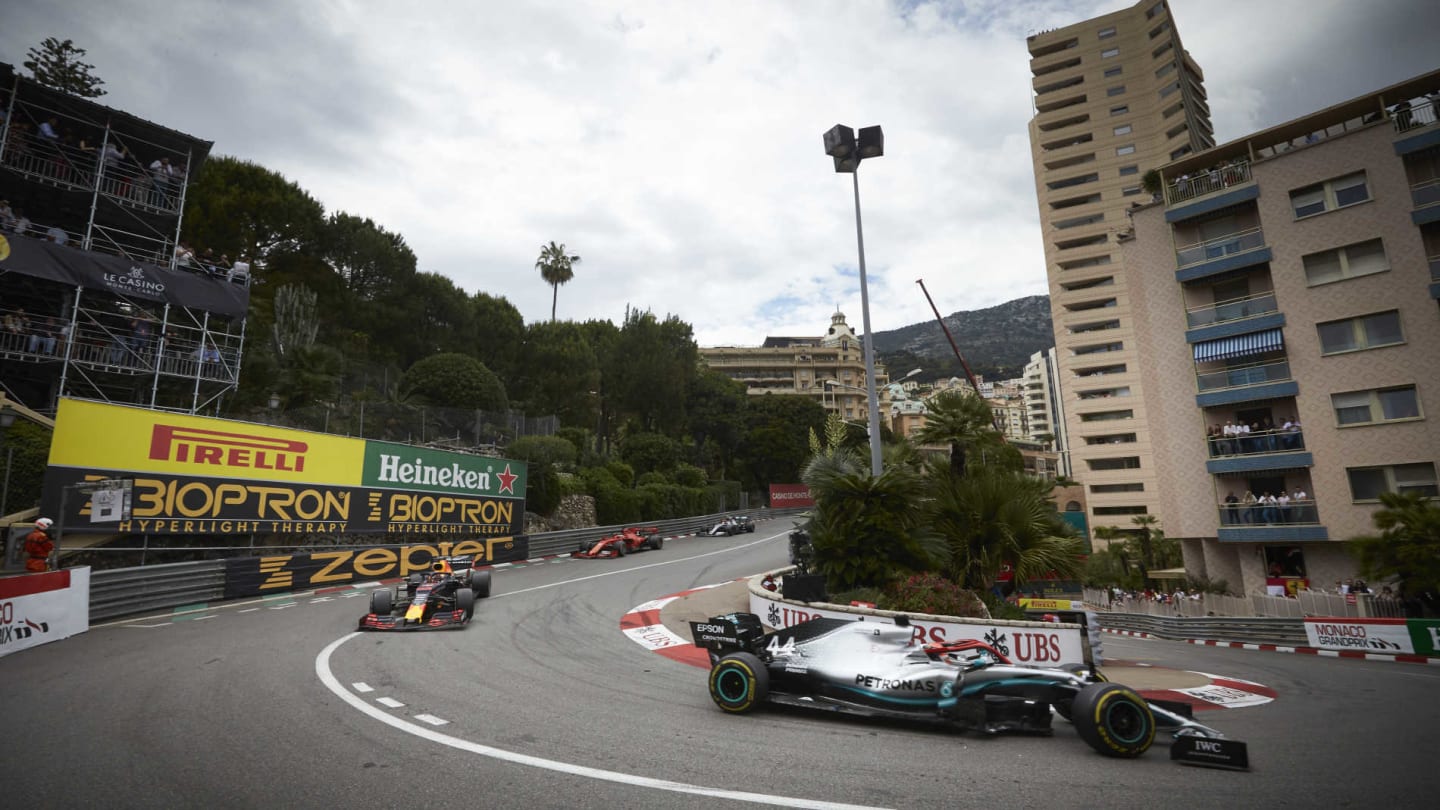
Hamilton engages Defence Mode
Despite his issues, Hamilton had two things going for him in the Grand Prix. Firstly he was racing on a circuit that is nigh on impossible to overtake on. Secondly, he still had good rear tyres. That meant every time he was at the apex he just needed to get the car turned and then punch the throttle out of the corners to make sure Verstappen couldn’t stay with him on the short straights – this is what he did out of Portier and through the Tunnel.
The understeer Hamilton had meant that Max was always very close to him, particularly in the hairpin sections at Mirabeau and Loews and Rascasse, because they are the tightest corners on the circuit where the fronts are working hardest.
The problem for Verstappen was that he couldn’t overtake in these places. It is so unconventional and risky, and the one time he got a little bit closer, Hamilton covered the inside into Loews.
The way to drive around understeer would conventionally be to provoke the car to turn on the brakes or on the throttle or to take a kerb to get the car to rotate slightly.
MONACO GP: Verstappen hits Hamilton in late battle for lead
The tools at Lewis’s disposal
In Formula 1 there are tools the drivers have to affect the balance of the car. Using more engine braking, and/or a more rearwards brake balance is a key thing that Hamilton said he did.
This puts more emphasis on the rear axle for braking and entering the corner, making the car less stable, but helping to turn on the initial entry phase. It also reduces the chance of locking the front tyres, which is crucial on a degrading tyre.
Secondly the differential is an important tool in the cockpit. The differential allows the rear wheels to operate at different speeds whilst cornering, effectively allowing the driver to turn the car.
The more open the diff, the more unstable the car can become, thus reducing understeer. Again Hamilton said after the race that because of the understeer from the damaged front tyres, he was constantly opening the diff, particularly in the slow-speed hairpins where it is most effective in helping to turn the car.
Normally if drivers were suffering as Lewis appeared to be in Monaco they would have pitted and changed onto new tyres because they would be overtaken.
But track position is so critical in Monaco, and Lewis knew though that if he just parked it on the apexes, drove slowly where he couldn’t be overtaken to make sure he got straight for the exit, he would be okay.
How Lewis Hamilton brilliantly managed his tyres to 'miracle' Monaco win
Why locking up could have spelled disaster
The other issue is locking. With a damaged front-left tyre, locking up becomes much easier because the grip level is simply lower.
Lance Stroll did exactly that on his worn mediums before contact with Kimi Raikkonen on the exit at Loews. Hamilton had enough margin to brake not on the absolute limit, though, because of his good exits. We never saw Lewis have a lock-up in the Grand Prix.
What surprised me is quite how badly Hamilton appeared to be struggling with his tyres, when Daniel Ricciardo was on the identical strategy in the Renault and coping far better.
At the end of the race Ricciardo was comfortably the fastest man on track on 60 lap-old medium tyres, the same as Hamilton’s.
Tyre wear can differ from car to car and driver to driver. There’s skill in keeping the tyres alive both from a driver point of view and from the engineers on the set-up.
But usually, it is sliding that is damaging them and Hamilton never appeared to be going fast enough to be sliding. After his pit stop and the Safety Car came in, he was lapping over a second slower than even the Williams cars for a while.
Given I’ve never noticed Mercedes struggling on their tyres in this era of Formula 1, more than anybody else it is strange that he was in quite as much trouble as he made out.
Potentially he just had too much inherent understeer in the car, compared to Ricciardo’s Renault, and that means the front tyres are likely to get more work anyway, and thus the tyre wear was as a result of balance and set-up on the car.
Either way, for Hamilton, he is experienced enough to know how to drive around these troubles and it was a well measured race to the flag. He got the win and that’s what counts.
YOU MIGHT ALSO LIKE
FeatureF1 Unlocked MONDAY MORNING DEBRIEF: How Red Bull rolled the dice to give Verstappen the chance of an against-the-odds victory in Monaco
News ‘It’s not a tension’ – Vasseur downplays rift rumours between Hamilton and race engineer Adami as he praises Leclerc’s Monaco podium
News Bortoleto unhappy with ‘risk’ Antonelli took that resulted in crash after ‘embarrassing’ overtake
FeatureF1 Unlocked GREATEST RACES #23: An F1 title decided by just half a point – 1984 Portuguese Grand Prix
